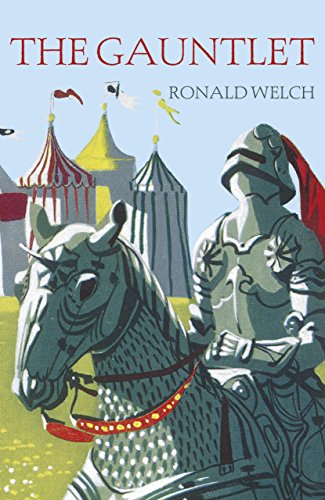The Gauntlet
In present-day Wales, Peter Staunton and his friend, Gwyn Evans, stumble across a large medieval gauntlet while lost in the mist in the grounds of Carreg Cennen Castle. When Peter puts the gauntlet on, he hears the sound of horses and fighting, as if transported back to the time of a battle. The knowledgeable and every-cheerful Vicar of Llanferon tells Peter about the legend of the battle of Carn Eglwys, fought at Easter time in 1326, and of others who had also found the gauntlet at that time of year and had the same experiences as Peter. Undaunted by the Vicar’s misgivings, Peter goes to the castle on Easter Monday where, after falling asleep, he awakens in 1326, wearing the gauntlet. From then on, the novel becomes a timeslip story about Peter, now in the guise of the eldest son of Sir Roger de Blois, learning to navigate his way around life in 14th century Britain, such as learning how to fight with hawks, use a longbow and behave at a banquet.
Originally published in 1951, Ronald Welch’s The Gauntlet is a fast-paced adventure story, with the added twist and interest of time-travel and is both fun and educational. It dives straight into the story and quickly transports us back to a colourful, exciting time of jousts and battles. But what gives this book an added interest is that it is also provides an extra time-slip, from 2015 to early 1950s Britain.
The Gauntlet was aimed primarily at boys between the ages 8 and 12 and provided an escape from dull post-war Britain into a world of knights, banquets and jousting. It will most definitely have the same appeal to young readers today.










